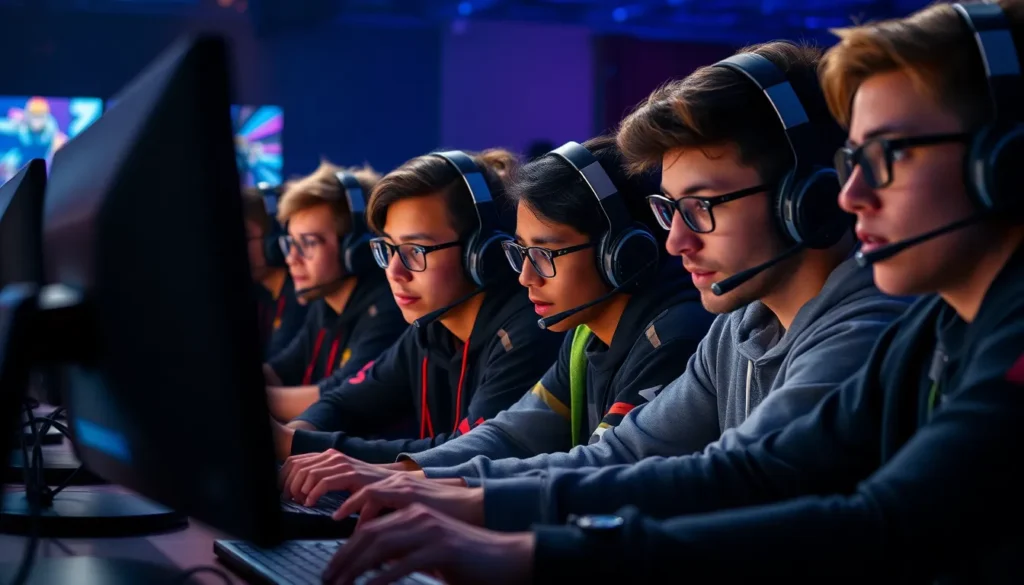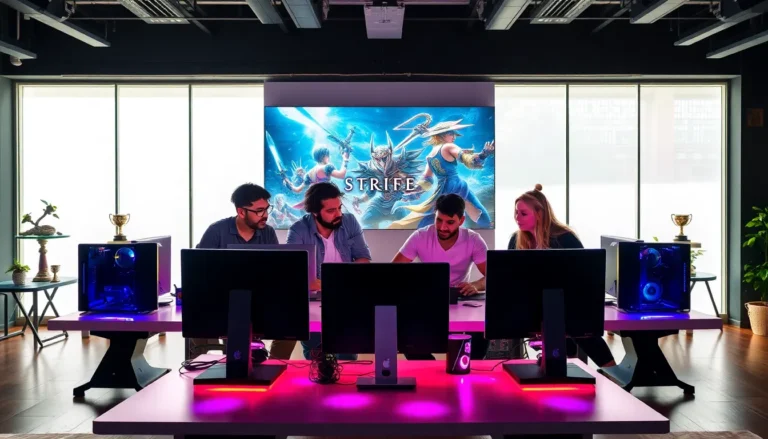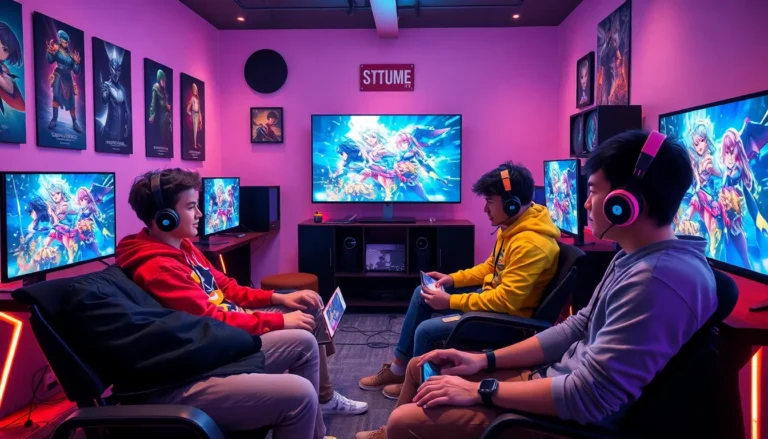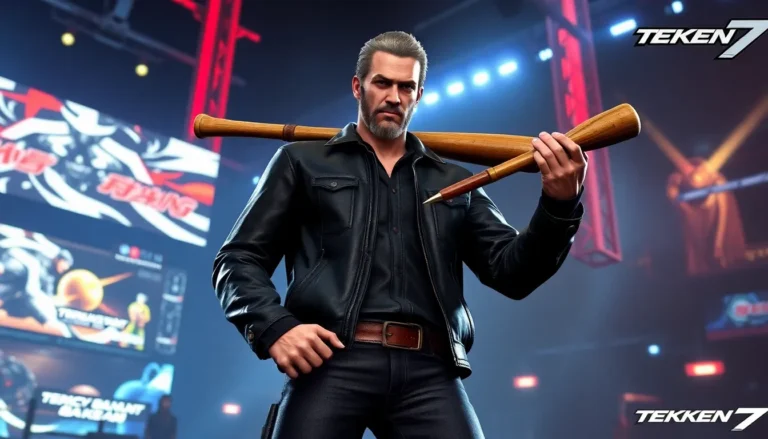In the fast-paced world of MOBA games, the in-game economy is like the secret sauce that keeps players coming back for more. It’s not just about slaying foes and capturing objectives; it’s about how players manage their resources, upgrade their heroes, and build that unbeatable strategy. Understanding this economy can make the difference between a glorious victory and a facepalm-worthy defeat.
Table of Contents
ToggleOverview of MOBA In-Game Economy
The in-game economy in MOBA games comprises various elements, including currency, resources, and item systems. Players gather currency through actions like defeating enemy champions, destroying structures, or achieving objectives. Each of these actions directly contributes to a team’s overall economic strength.
Resources play a crucial role, involving gold, experience points, and timed buffs. Accumulating gold enables players to purchase items that enhance their heroes’ abilities and attributes. Experience points, on the other hand, facilitate leveling up, unlocking powerful skills as matches evolve.
Item acquisition represents a strategic element within the economy. Choosing items based on opponents’ team compositions and player roles generates advantages during gameplay. High-impact items can shift the balance of power, which is vital during team fights or critical objectives.
Additionally, the in-game economy influences decision-making and map awareness. Awareness of opponents’ resources, including their item builds and experience levels, allows players to make informed tactical choices. Constantly assessing the economic state improves overall gameplay effectiveness.
Balancing resource allocation is essential for maintaining competitiveness. Players must determine when to engage in fights versus farming for gold and experience. The tension between aggression and caution significantly affects match outcomes.
A comprehensive understanding of MOBA in-game economy aspects enhances strategy and decision-making. Effective resource management, item selection, and tactical awareness establish a foundation for success in competitive play.
Core Components of MOBA In-Game Economy

Understanding the core components of the MOBA in-game economy is essential for strategic gameplay. Players navigate several elements, including currency types and resource management, to enhance their performance.
Currency Types
Currency in MOBA games typically consists of gold and other forms of in-game currency. Gold accumulates through actions such as defeating enemy champions and destroying structures. Some games introduce additional currencies that can enhance strategy further. Players use this gold to purchase items which improve heroes’ abilities and overall effectiveness in battle. The variation in currency types promotes different strategies, as players may prioritize one over another depending on their chosen heroes and the opposing team’s composition. Efficient acquisition and expenditure of currency often dictate a team’s success in matches.
Resource Management
Resource management is critical for ensuring a team’s competitiveness in MOBA gameplay. Players must balance between engaging in fights and farming for gold or experience points. Prioritizing objectives, such as securing map control or targeting specific enemy champions, often yields better resource management. Awareness of opponents’ resources informs tactical decisions and can lead to advantageous engagements. Monitoring team and enemy gold totals allows players to gauge timing for fights. Effective resource management not only contributes to individual success but also enhances team coordination and victory chances.
Economic Strategies in MOBA Games
Understanding economic strategies is essential for success in MOBA games. Players navigate two key aspects: farming and fighting, alongside itemization and build paths.
Farming vs. Fighting
Farming involves gathering gold and experience points through minion kills and jungle monsters. Engaging in fights often garners immediate rewards but can expose players to risks. Prioritizing farming during crucial early stages strengthens heroes through income accumulation. Alternatively, taking fights can disrupt opponents’ farm, providing economic benefits. Striking a balance between these actions is vital for maintaining an advantage. Teams that excel in farming consistently outpace opponents in both gold and levels. Monitoring the map and enemy movements aids players in deciding when to engage or farm.
Itemization and Build Paths
Itemization reflects a player’s choices in acquiring and upgrading items to enhance hero abilities. Specific build paths cater to different situations based on team compositions and enemy strengths. Opting for damage or defense items shapes a player’s effectiveness during skirmishes. Players adapt their item choices based on current resources, ensuring each purchase contributes to maximizing impact. Building toward synergy with teammates boosts overall team performance. Maintaining flexibility in itemization allows players to respond dynamically to opponents and game progress. Understanding itemization nuances fosters strategic depth, enhancing the in-game economy.
Impact on Gameplay and Player Experience
In a MOBA, the in-game economy significantly affects gameplay and player experience. Understanding economic dynamics influences how players approach matches.
Balancing Mechanics
Balancing mechanics are crucial in maintaining fair competition. Developers adjust currency gain rates to ensure no team gains an overwhelming advantage. They implement measures such as diminishing returns on gold from enemy champions, maintaining challenge levels. Also, designing item costs requires careful consideration, affecting players’ purchase strategies. Player choices also reflect economic balance; teams that manage resources well can exploit opponents’ weaknesses. Awareness of in-game economy shifts dictates players’ engagement in fights and farming. Overall, effective balancing fosters an environment where skill and strategy dictate outcomes, enhancing competitive integrity.
Player Engagement and Retention
Player engagement and retention hinge on economic experiences within MOBAs. Players drawn to games with rewarding economies are more likely to stick around. They appreciate the feeling of progression through currency accumulation, which fuels excitement. Engaging economies enhance satisfaction by providing meaningful choices in itemization. Teams that collaborate effectively to manage resources across matches often bond deeper, creating lasting connections. Additionally, regular updates and changes to the economy can spark renewed interest. Keeping currency and rewards fresh encourages players to adapt strategies, maintaining ongoing excitement and participation in the game.
Mastering the in-game economy is essential for thriving in MOBA games. Players who grasp resource management and strategic itemization gain a significant edge over their opponents. It’s not just about individual skill but also how well a team collaborates to optimize their economic advantages.
Engaging in effective farming while knowing when to fight can turn the tide in matches. Players should remain adaptable in their build paths to respond to dynamic game situations. A well-balanced economy fosters a competitive environment where strategy and teamwork reign supreme. Ultimately, understanding these economic principles not only enhances gameplay but also enriches the overall player experience.




